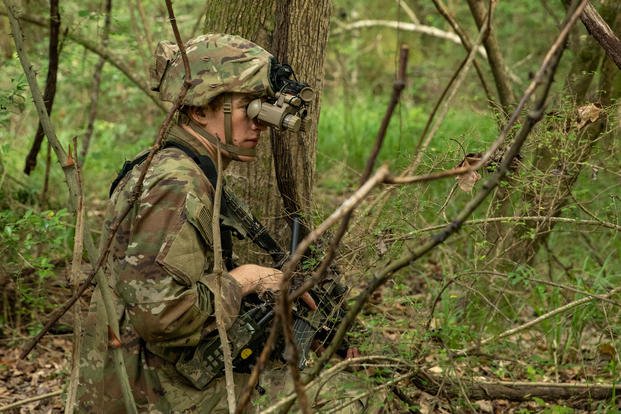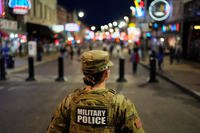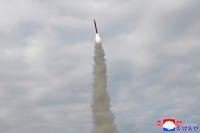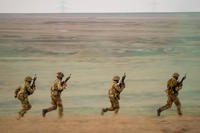The Army wants to buy thousands of new, low-cost night vision devices for drivers and other logistics troops who are not among the close-combat units slated to receive cutting-edge systems like Microsoft-made Integrated Visual Augmentation System, or IVAS, headsets.
Since it launched its bold modernization strategy in 2017, the Army has focused on improving the situational awareness of infantry and other close-combat units by developing systems such as IVAS and Enhanced Night Vision Goggle-Binoculars, or ENVG-Bs.
The service just awarded a $22 billion contract to Microsoft to produce IVAS for about 120,000 soldiers in close-combat units. Scheduled for fielding later this year, the sophisticated goggles are designed to equip combat troops with a head-up display that allows them to view tactical maps, as well as their weapon-sight reticle. IVAS will also replace night-vision devices that have to be mounted on special helmet brackets.
Read Next: Army Wants to Replace the Cold War-Era TOW Missile with a New Longer-Range Tank Killer
The Army also began equipping infantry units with ENVG-Bs in 2019. The binocular-style device gives soldiers enhanced depth perception and features a thermal image intensifier so they can see enemy heat signatures both at night and in the daylight through smoke, fog and other battlefield obscurants.
The service has stressed from the beginning that non-combat arms soldiers do not need sophisticated devices such as IVAS and ENVG-B, but maneuver officials at Fort Benning, Georgia, announced Wednesday that the Army wants to upgrade its inventory of outdated AN/PVS 14 monocular night vision devices.
"We are looking for night vision that is better than PVS 14s, not quite the ENVGs ... not quite IVAS types of things, but more focused on the logistics side of a [brigade combat team] and how they support the close-combat force," Lt. Col. Christopher Kennedy, chief of the Lethality Branch at Benning, told an audience at the Maneuver Capabilities Development and Integration Directorate's Industry Day. "There is going to be opportunity for night vision vendors. ... We are looking to buy tens of thousands of systems."
As part of the Army's Night Vision Modernization Strategy, the service hopes to begin buying these improved night vision devices for $6,000 to $8,000 apiece beginning in 2024, Kennedy said.
"We are calling it Night Vision Next," he said, describing how the Army plans to do a robust market survey -- "so going and saying, 'Hey, show me what you got.'"
The new devices will be for troops who support combat forces but are less likely to get into direct firefights with enemy forces, Kennedy said.
"Not that it is not intended for a firefight, but it's really intended to enable those who are going to be drivers of vehicles and those who are going to be doing some close-in logistic type things -- loading, unloading trucks; loading, unloading ammo; fueling -- different things like that while still maintaining ... a firefight capability," he explained. "This is really, truly helping someone do their job in limited visibility."
Army funding for the effort isn't budgeted until 2024, but the service could begin buying new devices sooner if the right capability becomes available, Kennedy said.
"We are looking to procure things pretty fast," he said. "If somebody comes in and wows us with something with a good price and it really looks like what we want ... there is nothing that says that can't be moved to the left."
-- Matthew Cox can be reached at matthew.cox@military.com.
Related: Microsoft Wins $22 Billion Deal Making Headsets for US Army














